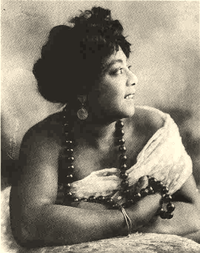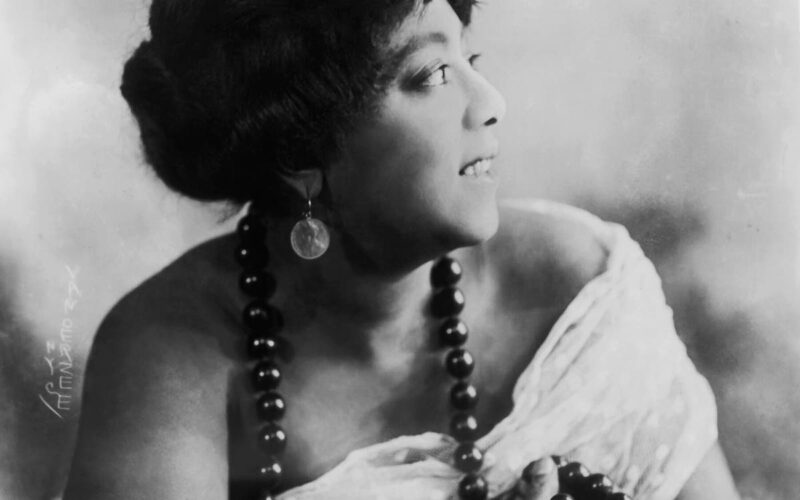Mamie Smith – A Complete Biography
Introduction
Mamie Smith (born Mamie Robinson; May 26, 1891) was an American vaudeville singer, dancer, and pioneering recording artist whose 1920 recording of “Crazy Blues” helped open the commercial recording industry to Black artists and to the blues as a popular musical form. Though she came from vaudeville and worked in several musical styles, Smith’s commercial success with blues—especially the hit often called the first major “race record”—changed how record companies marketed music and created a market for African American performers in the 1920s and beyond.

Childhood
Mamie Robinson was born in Cincinnati, Ohio, in 1891. Earlier accounts sometimes gave different years, but 1891 is now the most accepted. Growing up in Cincinnati at the turn of the century, she was exposed to popular stage entertainment and local musical traditions that would shape her later vaudeville work.
Youth
From an early age, Mamie entered show business. As a child and teenager she toured with traveling acts and performed in variety shows, learning singing, dancing, and stagecraft—skills that would make her versatile in later years. By her late teens and early twenties she was firmly part of the vaudeville world, performing in touring shows and in Harlem clubs where a mixture of blues, jazz, and popular song styles were evolving. This vaudeville background made her a confident, theatrical performer with broad stylistic range.
Adulthood and Career Breakthrough
In New York City, Mamie Smith’s career moved from live stage work to recorded music. In early 1920 she made her first commercial recordings for Okeh Records after Perry Bradford, a Black songwriter and bandleader, persuaded the label to record an African American singer. On August 10, 1920, Smith recorded “Crazy Blues” with her band, the Jazz Hounds, and the record was released that fall.
The song’s popularity among Black audiences was immediate and profound. It is widely cited as the single recording that made major record companies realize there was a substantial market for records by and marketed to Black listeners. That realization led to the creation and expansion of “race records” lines across labels, and it helped launch the classic blues era and a wave of recordings by other Black female blues singers in the early 1920s.
Major Compositions and Recordings
Though Mamie Smith’s recorded catalogue is not vast, her 1920 recordings were enormously influential. The most important recordings and songs associated with her include:
- “Crazy Blues” (1920) — Written by Perry Bradford and recorded by Mamie Smith and Her Jazz Hounds, this single became the landmark recording that showed record companies a market for Black artists and blues recordings. It sold tens of thousands of copies within months and is often cited as the first major blues hit recorded by an African American vocalist.
- “It’s Right Here for You (If You Don’t Get It, ’Tain’t No Fault of Mine)” — the B-side of “Crazy Blues,” which was also widely played.
- Earlier 1920 sessions — In February of that year, Smith recorded sides such as “That Thing Called Love” and “You Can’t Keep a Good Man Down,” which set the stage for her breakthrough later that year.
Beyond these early sides, Smith continued to work in recordings and appeared in early sound-era films. Her recorded legacy—especially “Crazy Blues”—is remembered more for its cultural and commercial impact than for a long catalogue of hits.
Impact on the Record Industry and the Blues
The commercial success of Mamie Smith’s “Crazy Blues” is commonly described as the moment when record manufacturers recognized the scale of the African American record-buying public. The Okeh release and its sales prompted other labels to create “race record” series and to actively recruit Black performers—especially female blues singers—leading to the classic blues era featuring artists such as Bessie Smith and Ma Rainey.
This structural change in the recording industry had a long ripple effect: it brought Black vernacular music into mass-produced media, shaped musical tastes in the 1920s, and helped to establish the blues as a central American musical idiom.
Later Life and Death
Mamie Smith’s prominence on records diminished as the 1920s progressed and musical fashions changed. She made recordings between 1920 and 1931, then largely retired from recording. She later appeared on screen in early sound films—most notably in short films and “race films” of the 1930s and early 1940s—and she returned to occasional performing.
She died in 1946 in New York. For many years her gravesite was unmarked; later efforts by historians, musicians, and supporters led to campaigns to properly commemorate her resting place, reflecting the reassessment of her importance to American music history.
Conclusion
Mamie Smith occupies a pivotal place in 20th-century American music history. She bridged vaudeville showmanship and vernacular blues in a way that made her recordings commercially powerful and industry-changing. Her 1920 recording of “Crazy Blues” is widely recognized not only for its artistic qualities but for its outsized commercial and cultural consequences: it demonstrated an underserved market, pushed record companies to record and market Black performers, and helped to set the stage for the classic blues era of the 1920s.
Although her later life and career did not produce decades of chart dominance, Smith’s role as a trailblazer—especially as a Black woman who opened doors in a segregated and often hostile industry—remains secure. Her legacy endures in the artists she helped make possible and in the ongoing recognition of early Black recording artists as foundational figures in American music.

Comments are closed